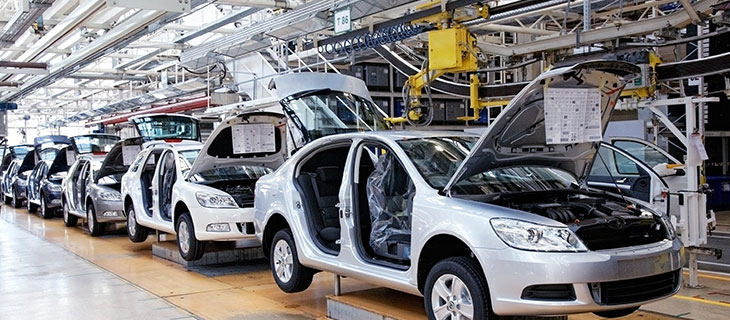8 Advanced Plastics Used in the Automobile Sector
According to a recent study, for every 10% reduction in vehicle’s weight, it reduces fuel usage by 6 to 8%. Due to current environmental and economic concerns, automobile manufacturers are now incorporating more advanced plastic materials so as to reduce weight and make the vehicles more fuel efficient.
Advantages that these advanced plastics used in transport vehicle are:
- Improved safety and comfort
- Fuel efficiency
- Flexibility in integrating components
- Design freedom
- Weight Reduction
Let us look at eight advanced plastics used in the automotive industry.
1) Poly-Vinyl Chloride
PVC is known for its flexibility, has great thermal stability, is flame retardant, and has extremely low lead content. It can be injection molded, compression molded, blow molded to create a multitude of rigid or flexible plastic products depending on the type and amount of plasticizers used. It is used to make automobile doors, sheathing electrical cables, and instrument panels.
2) Polypropylene
Polypropylene is a saturated polymer that is created from the monomer, propylene. One of the major benefits that polypropylene has to offer is that it is resistant to acids, bases, and chemical solvents. Its applications can be found in gas cans, carpet fibers, bumpers, cable insulation, and chemical tanks.
3) ABS
ABS is popular due to its low production cost and the ease with which the material is machined by plastic manufacturers. It is made by polymerizing styrene and acrylonitrile. What’s more, the styrene gives the plastic a shiny, impervious surface. It has outstanding high and low-temperature performance, great insulation properties, and is easy to paint and glue. Its applications can be found in dashboards, wheel covers, and automotive body parts.
4) Polyamide
Polyamide is highly water absorbent, has high mechanical properties and is rigid in nature. It is a general-purpose polymer that can be extruded and molded. The advantages that polyamides offer are high strength, abrasion resistance, and resilience. Its applications in an automobile can be found in gears, cams, bearings, and waterproof coatings.
5) Polystyrene
Polystyrene exhibits incredible electrical and chemical resistance. It is easy to manufacture, is highly elastic and softens when heated beyond its glass transition temperature. Some of its mechanical properties include its strength, elongation, impact strength, toughness, and modulus. It is used in car fittings, display bases, and buttons.
6) POM (polyoxymethylene)
POM is a type of thermoplastic material that is known for its excellent dimensional stability, creep resistance, high heat resistance and has good electrical and dielectric properties. It is an engineering material used in parts that require precision. Applications for POM include high-performance components such as gears, interior, and exterior trims and fuel systems.
7) Polycarbonate
Polycarbonate offers excellent thermal, electrical, impact, optical, weathering properties. It offers a distinct combination of hardness, stiffness, and toughness. Due to its incredible impact strength, it is one of the top choices for headlamp lenses, bumpers, helmets, and bullet-proof glass.
8) Polyethylene
Polyethylene exhibits high impact resistance, low density, and good toughness. It is extremely cost-effective, is moisture-resistant and is useful in a multitude of thermoplastics processing methods. Its applications can be found in electrical insulation and reinforced glass.
High-performance plastics will continue to play a vital role in the automotive industry owing to the incredible benefits they offer. If you are in the automotive industry, then Plastivision is the platform for you as it will immensely make things easier for your business.
Leave a Reply Cancel reply
Recent Posts
- Understanding The Materials That Are Used To Build Plastic Toys
- All You Need To Know About Food-grade Plastics
- A Glance At The Materials That Boost The Performance Of Plastics
- Understanding The Importance Of Exploring New Business Opportunities In The Plastic Industry
- Understanding The Importance Of Investing in R&D For The Plastic Industry
Categories
- 3D Printing
- AIPMA
- Automation
- Automobile Sector
- Bio Plastics
- Environment
- Innovations In Recycling
- Latest Innovations
- Molds & Dies
- News
- Packaging Industry
- Plastic
- Plastic Application
- Plastic Industry
- Plastic Market
- Plastic Myths
- Plastic News From The World
- Plastic Packaging
- Plastic Products
- Plastic Recycling
- Plastic Solar Cells
- Plastic Toys
- Plastic Waste
- Plastic World
- Plastics
- Plastics And Their Applications
- Plastics In Agriculture
- Plastics In Healthcare
- Plastics In Medical Industry
- Plasticulture
- Processing Machinery
- Recycling Machines
- Robotics
- Uncategorized
- Virtual Reality
Archives
- November 2023 (3)
- October 2023 (2)
- September 2023 (3)
- August 2023 (3)
- July 2023 (3)
- June 2023 (3)
- May 2023 (2)
- April 2023 (2)
- March 2023 (2)
- February 2023 (2)
- January 2023 (2)
- December 2022 (3)
- November 2022 (1)
- October 2022 (1)
- September 2022 (2)
- August 2022 (1)
- July 2022 (3)
- May 2022 (3)
- March 2022 (2)
- February 2022 (1)
- January 2022 (1)
- September 2021 (2)
- August 2021 (3)
- July 2021 (4)
- June 2021 (4)
- May 2021 (3)
- April 2021 (2)
- March 2021 (4)
- November 2019 (8)
- October 2019 (8)
- September 2019 (8)
- August 2019 (8)
- July 2019 (8)
- June 2019 (8)
- May 2019 (8)
- April 2019 (8)
- March 2019 (8)
- February 2019 (11)
- January 2019 (8)
- December 2018 (8)
- November 2018 (12)
- October 2018 (12)

